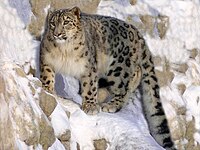
Photo from wikipedia
This article traces the evolution of land protection in the Pamir Mountains of Tajikistan. The Pamirs form the “Roof of the World,” where the Hindu Kush, Karakoram, Tian Shan, and… Click to show full abstract
This article traces the evolution of land protection in the Pamir Mountains of Tajikistan. The Pamirs form the “Roof of the World,” where the Hindu Kush, Karakoram, Tian Shan, and Kunlun Shan ranges converge. Field and archival research identified (1) the origin and diffusion of parks and protected areas across the globe, (2) the biophysical properties of the Pamir Mountains that inspired the conservation efforts, (3) the sequence of land protection from national park to supranational World Heritage recognition, and (4) the characteristics of the Pamir Mountains that justify UNESCO Biosphere Reserve status. Stalin forcefully depopulated these highlands in the 1930s. Tense Soviet–Sino relations in the 1960s and the prolonged Soviet–Afghan war further restricted human movements. When Gorbachev's perestroika allowed return migration in the mid-1980s, Tajik farmers and Kirghiz pastoralists resettled a landscape of thriving plants and wildlife. Concurrently, a nascent coalition of citizen scientists and government officials began advocating for a park. In 1992 the government established the Tajik National Park to protect environmental and sacred sites, promote traditional economic activity, and develop tourism. The antecedent Soviet collapse, civil war, economic upheaval, and renewed conflict in Afghanistan, however, complicated land protection. In 2013, UNESCO designated the Tajik National Park as a World Heritage Site. Establishing a Biosphere Reserve is the next step to promoting transboundary conservation with the adjacent protected areas in China, Pakistan, and Afghanistan. The potential reserve size, terrain, and demographic trajectory are consistent with the Man and the Biosphere model.
Journal Title: Annals of the American Association of Geographers
Year Published: 2017
Link to full text (if available)
Share on Social Media: Sign Up to like & get
recommendations!